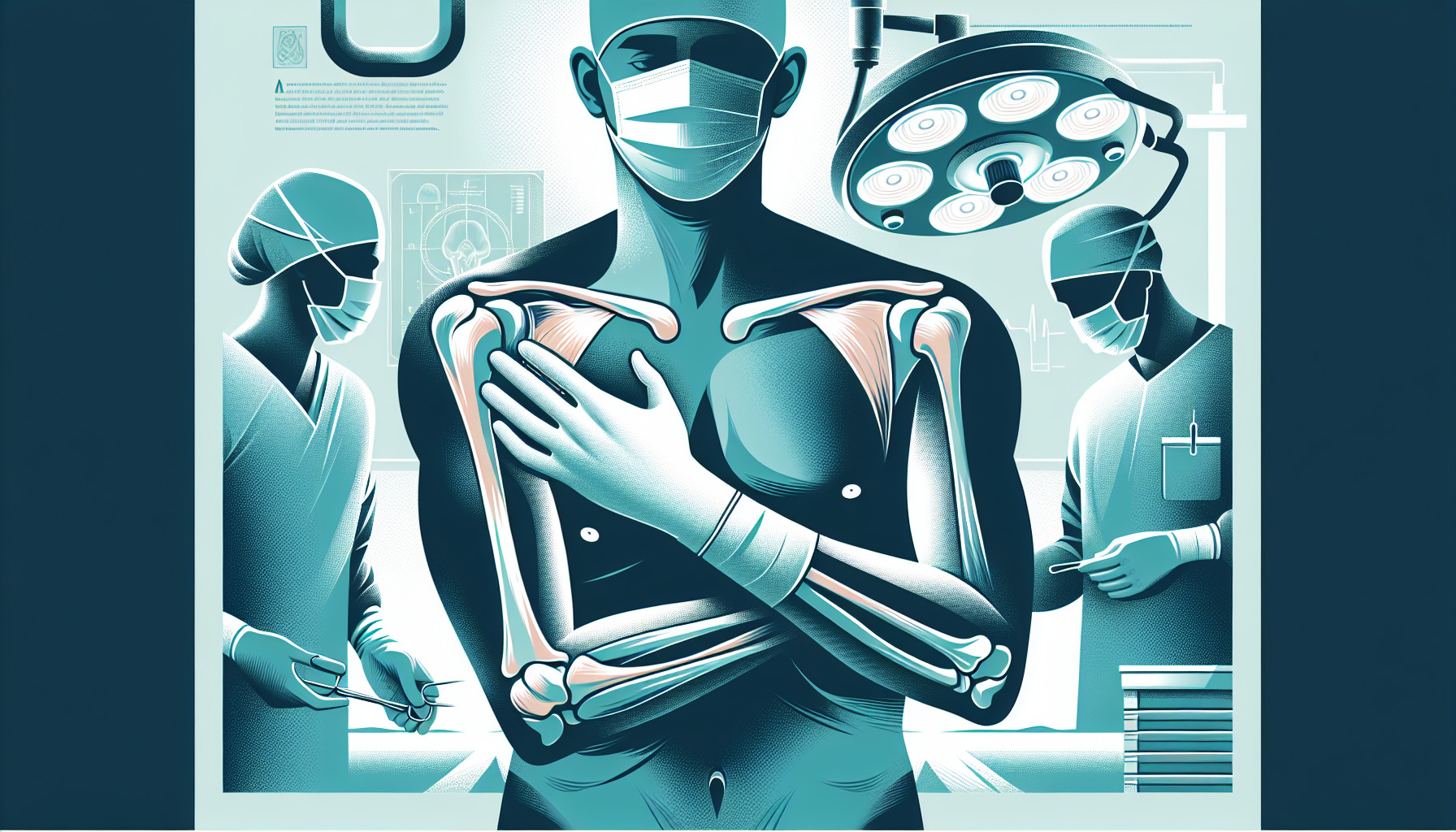Our Summary
This research paper tests the accuracy of a wearable sensor system called ‘Motion Shirt’ in assessing shoulder movement in patients waiting for shoulder replacement surgery. The shirt uses Inertial Measurement Units (IMU) to provide unbiased movement data. The study compared data from the Motion Shirt with data from the Dartfish Motion Analyzer software, while the patients performed the Functional Impairment Test-Hand and Neck/Shoulder/Arm (FIT-HaNSA) test. The results showed that the Motion Shirt was largely in agreement with the Dartfish software, indicating that it could be a reliable tool for analyzing shoulder movement in these patients. There were a few instances where the Motion Shirt did not agree with the Dartfish software, but these were relatively small percentages.
FAQs
- What is the purpose of the ‘Motion Shirt’ in this research study?
- How does the Motion Shirt compare with the Dartfish Motion Analyzer software in assessing shoulder movement?
- Were there any cases where the Motion Shirt did not align with the Dartfish software results?
Doctor’s Tip
One helpful tip a doctor might tell a patient about shoulder replacement is to follow the rehabilitation plan prescribed by their healthcare team diligently. This may include physical therapy exercises to improve range of motion and strength in the shoulder joint, as well as guidance on how to properly care for the shoulder post-surgery to ensure a successful recovery. By actively participating in their rehabilitation program, patients can help optimize their shoulder function and overall quality of life following a shoulder replacement procedure.
Suitable For
Patients who are typically recommended shoulder replacement surgery are those with severe shoulder pain and stiffness that does not improve with conservative treatments such as physical therapy, medication, or injections. Other criteria for shoulder replacement surgery may include:
- Advanced arthritis in the shoulder joint
- Rotator cuff tears that cannot be repaired
- Previous unsuccessful shoulder surgeries
- Severe fractures or trauma to the shoulder joint
- Chronic shoulder instability
- Avascular necrosis (death of bone tissue due to poor blood supply) in the shoulder joint
Overall, patients who have significant functional impairment and pain in their shoulder joint that interferes with daily activities and quality of life may be recommended for shoulder replacement surgery. The use of wearable sensor systems like the Motion Shirt can help assess shoulder movement in these patients and provide valuable data for preoperative planning and postoperative rehabilitation.
Timeline
Before shoulder replacement surgery:
- Patient experiences shoulder pain, stiffness, and limited range of motion
- Patient undergoes physical therapy and conservative treatments to manage symptoms
- Patient may use assistive devices such as slings or braces to support the shoulder
- Patient consults with an orthopedic surgeon to discuss the possibility of shoulder replacement surgery
- Patient undergoes preoperative testing and preparation for surgery
After shoulder replacement surgery:
- Patient undergoes surgery to replace the damaged shoulder joint with a prosthetic implant
- Patient stays in the hospital for a few days for monitoring and rehabilitation
- Patient begins physical therapy to regain strength and range of motion in the shoulder
- Patient gradually increases activities and exercises to improve shoulder function
- Patient attends follow-up appointments with the surgeon to monitor progress and address any concerns
- Patient may need to make lifestyle adjustments to accommodate the new shoulder joint
- Patient experiences improved shoulder function and reduced pain after successful rehabilitation and recovery.
What to Ask Your Doctor
- How will shoulder replacement surgery improve my quality of life and mobility?
- What are the risks and potential complications associated with shoulder replacement surgery?
- What is the expected recovery time and rehabilitation process after shoulder replacement surgery?
- How long will the shoulder replacement implant last and what are the potential long-term outcomes?
- Are there any specific restrictions or limitations on activities that I should be aware of post-surgery?
- How will my shoulder movement be assessed before and after surgery to track progress and success of the procedure?
- Is there any specific physical therapy or exercises that I should do before and after surgery to improve outcomes?
- What are the alternatives to shoulder replacement surgery and how do they compare in terms of effectiveness and recovery?
- How experienced is the surgical team in performing shoulder replacement surgeries and what is their success rate?
- Are there any specific lifestyle changes or modifications that I should consider before and after shoulder replacement surgery for optimal results?
Reference
Authors: MilaniZadeh S, MacDermid JC, Langohr GD, Johnson J. Journal: Biomed Phys Eng Express. 2025 Jan 10;11(2). doi: 10.1088/2057-1976/ad9838. PMID: 39608021
